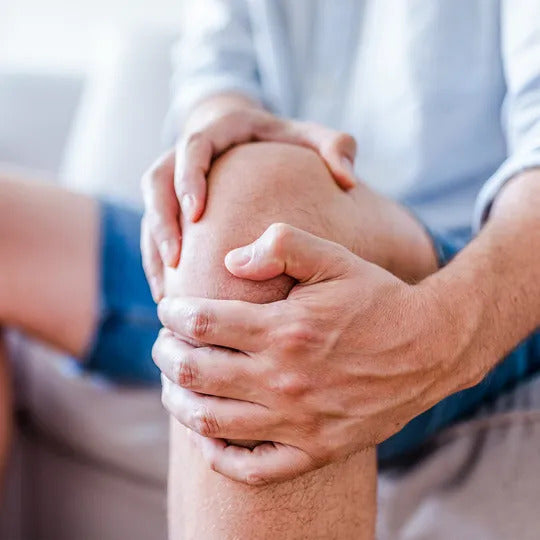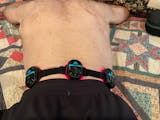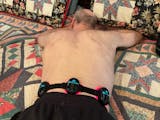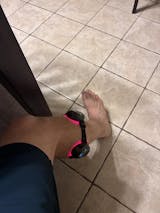It’s the runner’s paradox: the very activity that brings you freedom and strength can also be the source of your greatest frustration. And when it comes to frustration, nothing compares to the complex, nagging reality of knee pain.
It's rarely just a simple, singular ache. One day it's a general soreness, the next it’s a sharp pain behind the knee when you bend, or a dull throb on your inner knee pain after a long run.

If you're tired of guessing with ice packs and stretches that don't seem to address the specific issue, this guide is for you. We'll break down the common culprits of a runner's knee pain and explore a modern, targeted approach to managing it effectively, so you can spend less time worrying and more time on the road.
The Foundation: Why a Runner’s Knee is So Complex The knee is a marvel of engineering, but it’s also the critical junction taking the impact of every stride. The pain you feel is often a symptom of an underlying issue, such as:
-
Patellofemoral Pain Syndrome (Runner's Knee): A general ache around or behind the kneecap.
-
IT Band Syndrome: Often felt on the outer side of the knee.
-
Patellar Tendinitis: Pain below the kneecap.
-
Baker's Cyst or Hamstring Tendinitis: A primary cause of pain behind the knee.
-
MCL Strain: Often a source of inner knee pain.
Traditional methods treat these as a monolith, but a smarter approach requires a more targeted solution.

The Modern Runner’s Checklist: What to Demand from an At-Home Knee Solution To effectively manage the different facets of knee pain, you need a tool that goes beyond temporary fixes. Here are the non-negotiables:
-
Deep, Cellular-Level Action: It must do more than just mask pain. A clinically-proven mechanism like Red Light Therapy (RLT) is the gold standard for supporting the body's natural anti-inflammatory and repair processes deep within the joint and connective tissues.
-
Targeted, Conforming Design: The knee isn’t a flat surface. You need a device that can wrap and conform to the joint, delivering energy precisely to the front, the back, and the sides—wherever your specific pain is located. A rigid, flat panel simply can’t do this effectively.
-
Seamless Integration for Consistency: Knee issues require consistent care. The tool must be wearable, portable, and hands-free, allowing you to get your therapy in while you relax, stretch, or even travel, ensuring you never miss a session.
Putting It All Together: The PRUNGO Protocol as a Case Study One of the only devices engineered to meet all these criteria is the PRUNGO FluxGo. Its design is uniquely suited to the complex needs of a runner’s knee.
-
Its Dual-Light Engine provides the clinically-proven red and near-infrared wavelengths necessary for deep penetration.
-
Its Modular, Wearable Design is the game-changer. You can place modules on the front, back, and sides of the joint, creating a 360-degree cocoon of therapeutic light that targets your specific pain point, whether it's pain behind the knee from a hamstring issue or inner knee pain from a strain.

An Example of an Advanced Runner's Knee Protocol:
-
Post-Run (Acute Management): Immediately after your run, place the three modules around the knee joint, focusing on the sorest spots. Use the Mid or Strong Mode (15-20 minutes) to calm immediate inflammation.
-
Daily Maintenance (Chronic Management): Before bed or in the morning, use the Strong Mode (20 minutes) on the knee to support long-term healing and prevent morning stiffness. If your pain is primarily behind the knee, focus the modules there.
Stop Letting Your Knee Dictate Your Run. Smart, consistent, and targeted care is the key to managing a runner’s most frustrating adversary. By integrating a proven, professional-grade tool into your routine, you’re not just chasing pain—you’re investing in your long-term ability to run freely and confidently.
[ Explore The Tool Engineered for a Runner’s Knee: The PRUNGO FluxGo ]
Backed by thousands of real user reviews and our 30-Day Risk-Free Trial.
















Share:
The Athlete's Ultimate Guide to Faster Muscle Recovery in 2025
Beyond Repair: A Stunt Performer’s Playbook for Rebuilding Strength After Trauma